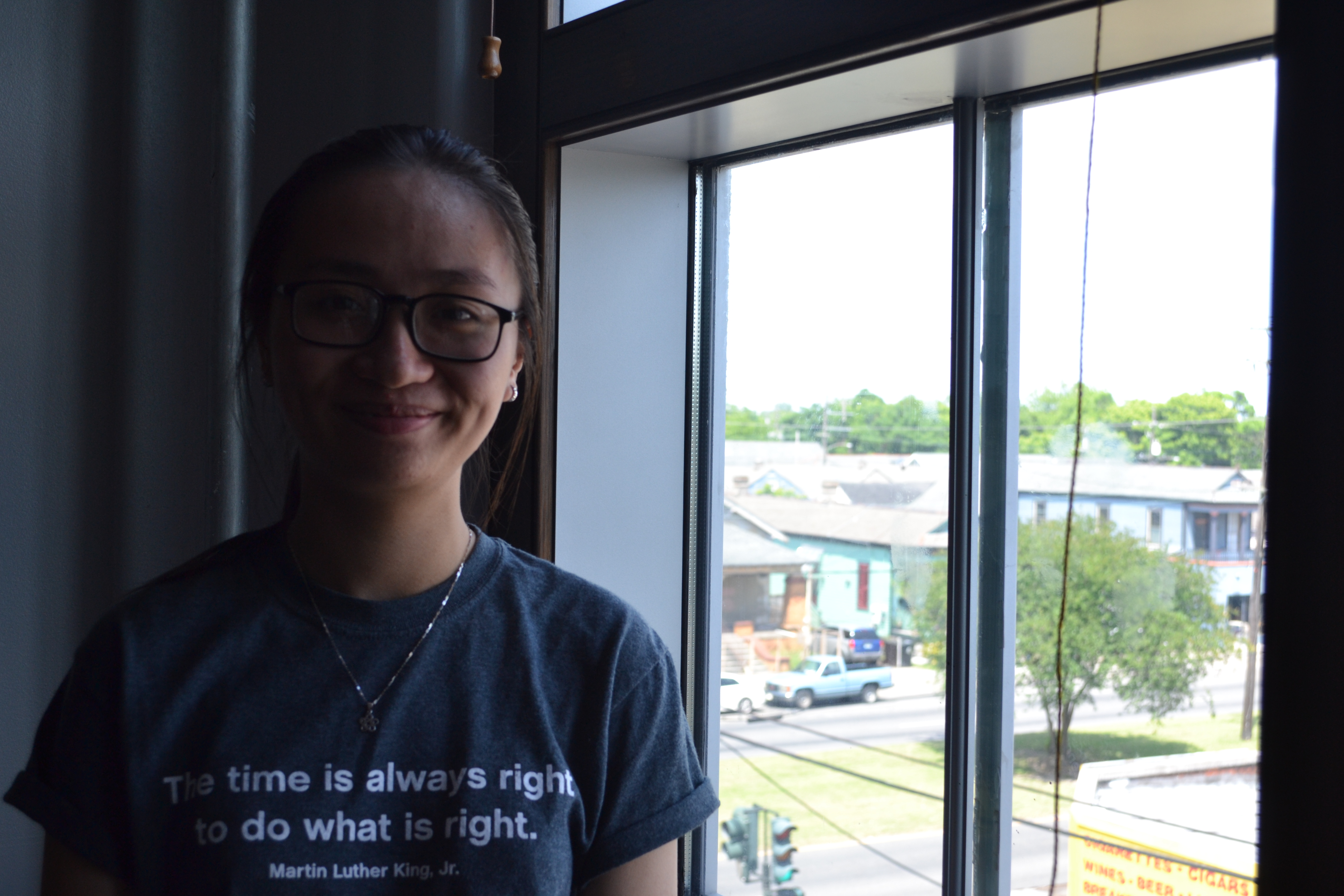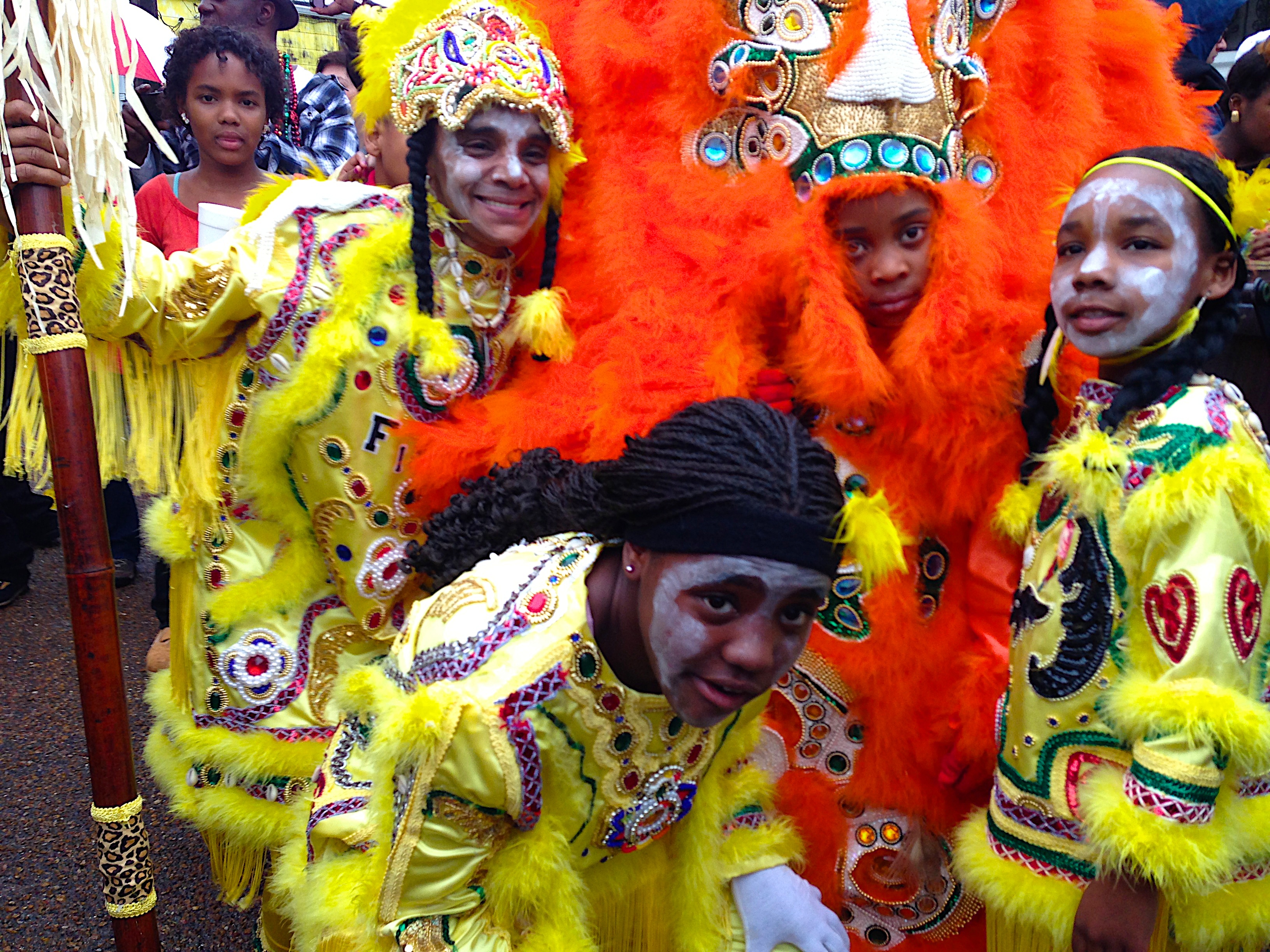Editor’s Note: Traces, Trash, and Testimony: Archives and the Literary Imagination was a course taught this Spring at Bard Early College in New Orleans by professor Joseph Bradshaw. In the class, students wrote creative pieces while engaging in archival research at the Historic New Orleans Collection. The students’ combination of poetic and investigatory logic led them into many exciting and unknown places as they thought and wrote about themselves in relation to New Orleans and its checkered history. As students studied at archival documents about subjects as varied voodoo, slavery, Mardi Gras Indians, and more and the Collection, back on BECNO’s campus they wrote poetry, personal essays, fiction, and other as-yet-undefined genres of creative writing. Three outstanding students from the class (Mervian Smith, Rajaeh Green, and Trang Huynh) have offered to share samples of their work here on ViaNolaVie. Here we have Trang Huynh’s creative writing piece about Mardi Gras Indians.

Trang Huynh, student at Bard Early College (photo by: Kelley Crawford)
Witnessing the success of my brother in saving my family’s tradition and being the head of a large organization of Mardi Gras parades strongly motivates me to become an influential person like him. However, his story of how he got to where he is now is even more exciting and intriguing to me.
After my brother gets home from a long day at work, I see him go inside our grandparent’s room. Having never visited their room because of its darkness, I follow him inside. The room is reserved for old people, which is apparent when I see old pictures that are put in collective frames and displayed on the shiny wooden table. The platform bed is set opposite to the table. The room is pretty narrow and smells like old wood with a moderate window on the left side of the bed.
My brother heads to a wardrobe on the right side of the bed. He asks me what’s inside. I retort, “Of course it is grandfather’s clothing.” He says that is right, but not quite. The clothing inside is nothing like the clothing in other closets.
When he opens the door, the only attire in the closet is a huge glowing costume made out of feathers. There is a hard fabric covering the chest and the area below the waist. It glitters with glowing red and depicts the pictures of villages and people and of the hunters and buffalos. I recognize this costume from when I joined one of the Mardi Gras Indian parades with my brother last year. But looking closely to this masterpiece, I am even more fascinated.
“This is where it all began,” my brother suddenly starts talking. “Two years ago, when grandma and grandpa were still alive, I was first told by them about our family tradition of being the chief, who preserved and protected our culture, in this Indian village.
“Now there are modern Mardi Gras parades that are large and more well-known. I would not have known about this if they did not tell me. Our grandparent was a chief. They told me everything about this costume and about our family. I decided at that time that in order to revive our family tradition of having Mardi Gras Indian parades and spreading this culture out to our people, I would go back in time and learn what was really happening there.”
My brother’s story of traveling back in time is the most interesting part of the story. Going back into the mid-twenty century, he landed in the midst of a Zulu parade, one of the oldest parades from African American culture in New Orleans; it is named after the Zulu Tribe–when the Tramps gathered to a meeting place and emerged as Zulus. People started marching in early twenty century and continue to do so today.
On my brother’s way to discover “new” things about our family’s Indian culture, he spotted a man who wore a huge costume with a mighty hat. The costume looked just like our grandma’s. To describe it, he says, is to compliment the most skillful, deftest hands of the weaver. The weavers, who are normal people like neighbors, workers, and residents who live in New Orleans, have to spend months sewing the outfits.
The clothings are comprised of bright feathers, beads, and embroidery. The brighter the feathers’ colors are, the more joy the atmosphere is. The most remarkable and highlighted part of the attire is the headdress. It is made of hundreds of organized feathers so that when the men dance, their headdress dances with them.

Young Mardi Gras Indians
Most of the costumes of Indian people depict and represent their daily life and old activities of an Indian tribe: the hunters and buffalos. So, looking at the embroidery on their costume, we can see elaborate details of villagers, fire, homes, hunters and buffalos. The costume that caught my brother’s eyes has the the words “Cheyenne Hunters,” sewn into it, which is one of the 13 Indian tribes living in New Orleans. I was fascinated with how the attire looks; since the one in my grandparent’s closet was so rigorous, I believed the others from the people would look even prettier.
My brother was determined to learn about making the outfits when he got back from the trip. The air in the parade was so bustling and joyful that he continued the direction of the march. “The jazz music,” he said, “is always the best.” No matter what time period we are in, the music always brings us together in our black community. My brother enjoyed, at that moment, forgetting about what time period he was in–like there was an invisible hammer breaking the distance of time and blending my brother into the crowd.
Stepping on the old roads, everything–the houses, people, and sceneries–were different from today, but there was still something familiar. The feeling of belonging. The feeling of home from people who might be our grandparents’ neighbors, ancestors, or close friends. Then he saw another march. This one was a bit different and strange but impressive in my brother’s eyes.
People were wearing black masks and covering their faces with black paints, unable to identify who is who. Asking a marcher, my brother was informed that in the past, slaves from Africa were sent to New Orleans and other southern states to work under white control. New Orleans was seen as the most African city in the U.S and had the largest source of Africanization of the entire American nation. The resident also said that not only blacks donned the black paints on their face; white people also joined in doing that.
The days during Mardi Gras were the most celebrated and happiest days for many in the community because you could feel the warmth and joyfulness of the people both in daytime and nighttime. My brother told me that he met a group of Indians who were having fun together in the evening. Together they danced the “Ring Shouts,” their traditional and secular dance. There was a sense of unity and love established between the crowd, my brother, and the strangers who no longer felt like strangers.
“So that was the end of the trip…” My brother pauses, looking at the outfit in my grandparent’s room. He looked like he was missing them, those who inspired him so much to take this responsibility for our family. “…but also the beginning of what needed to be done. After the trip, I started to learn about sewing; I know it looks girly, but sewing is the legacy of our family. It was the proudest thing that I’ve ever done. Then I learned more about the parades from our grandparents. It was a long road to bring back what has been lost in our community, but it is joy and pride that we have given back as well.”
 NOLAbeings
Multimedia artist Claire Bangser created NOLAbeings as a portrait-based story project that marries...
NOLAbeings
Multimedia artist Claire Bangser created NOLAbeings as a portrait-based story project that marries...
 Data corner: Adobe Suite (create a PDF, social media graphic, presentation, edit a photo and video
Data corner is where you go to work with analytics and top tech skills. It takes on everything from PERL and SQL to Canva and Sprout Social.
Data corner: Adobe Suite (create a PDF, social media graphic, presentation, edit a photo and video
Data corner is where you go to work with analytics and top tech skills. It takes on everything from PERL and SQL to Canva and Sprout Social.
